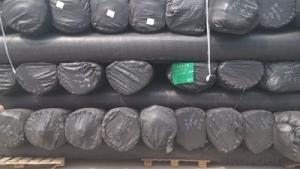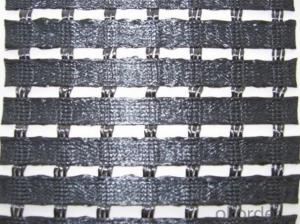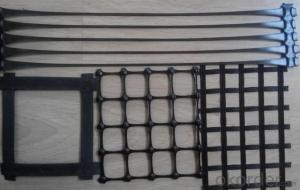HDPE Point Textured Geomembrane For river bank tunnel canel projects
- Loading Port:
- Tianjin
- Payment Terms:
- TT OR LC
- Min Order Qty:
- 88 m²
- Supply Capability:
- 1800000 m²/month
OKorder Service Pledge
OKorder Financial Service
You Might Also Like
Introduction of CNBM
China National Building Materials (Group) Corporation (CNBM) is a state-owned enterprise in charge of administrative affairs in China building materials industry. Established in 1984, CNBM is a large group corporation of building materials with total assets of RMB 25 billion and a total staff of 30,000. Now CNBM owns more than 200 subsidiaries in and abroad the country, including wholly-owned corporations and joint ventures.
FAQ of geosynthetics :
What is geosynthetics ?
Geosynthetics form a perfect erosion control fabric used extremely widely in civil engineering to stabilize and reinforce slopes and soil under or next to roads, railways, dams, water reservoirs etc.. They can be easily applied which minimizes the time of construction, as well as they limit the resources and materials necessary.
What kinds of geosynthetics we have ?
Non-woven geotextile, geogrids, geocells, GCL, Geomembranes, Geonets, Geocomposites etc .
What is the geosynthetics used for ?
Hydraulic
Lagooning and Water Treatment, Ornamental Ponds, Golf Courses
Aquaculture and Desalination,Water Lagoons,Tanks, Reservoirs, Liquid Waste,Floating Cover Solutions, Drainage and Filtration
Environment
Tailing ponds, Leach mining,Landfills,Landfill Capping,Protection against corrosion,Vertical Barriers
Civil Works
Erosion Control,Secondary Containment,Tunnels,Linear and Surface Works,Consolidation of Margins,Soil Reinforcement,Soil Separation.
Building - Parkings,Roofing,Soundproofing
The description of HDPE Geomembrane for Environmental Projects water conservancy projects landfill mining canal
Geomembranes are impermeable geosynthetics that, until recently, were mainly used as canal and pond liners. However, modern technology has broadened liner applications to include landfills, wastewater treatment lagoons, oil and gas exploration (including hydraulic fracturing or "fracking"), aquaculture, irrigation ponds and remediation. In many of these applications, a nonwoven geotextile is used as a cushion to protect the geomembrane. In general, geomembrane liners offer excellent puncture resistance and can withstand a wide range of chemicals and temperatures. They are also highly flexible and conform well to the subgrade.

The structure of HDPE Point Textured Geomembrane For river bank tunnel canel projects description:
One side or two sides uniformly point textured surface by special blow technology
Specification of HDPE Point Textured Geomembrane For river bank tunnel canel projects:
I. Thickness: L. Omm-3. Omm
2.4m-9m in width, roll length according to design or client ' s request
Features or Property of HDPE Point Textured Geomembrane For river bank tunnel canel projects:
Anti-crack, dimensional stability, anti-aging, smooth appearance, high friction coefficient.
Application of HDPE Point Textured Geomembrane For river bank tunnel canel projects:
I. Municipal projects
2. Landfill treatment projects
3. Waste water treatment
4. Mineral waterproofing
Production standard of HDPE Point Textured Geomembrane For river bank tunnel canel projects:
I. G B/T17643-2011 ( GH-2TI and GH-2T2 )
2. CJ/T234-2006
Area | Application of Geosynthetics |
Hydraulic | Lagooning and Water Treatment, Ornamental Ponds, Golf Courses Aquaculture and Desalination Water LagoonsTanks, Reservoirs, Liquid WasteFloating Cover SolutionsDrainage and FiltrationShading Cover Solutions |
Environment | Tailing ponds, Leach mining,Landfills,Landfill Capping,Protection against corrosion,Vertical Barriers |
Civil Works | Erosion Control, Secondary Containment, Tunnels,Linear and Surface Works,Consolidation of Margins,Soil Reinforcement,Soil Separation. |
Building | Parkings,Roofing,Soundproofing building |
- Q:Can geogrids be used in reinforcement of gabion structures?
- Yes, geogrids can be used in the reinforcement of gabion structures. Geogrids are commonly used to increase the stability and strength of gabion walls by providing additional support and preventing soil erosion. They are typically placed within the gabion structure to enhance its load-bearing capacity and overall performance.
- Q:What is the effect of installation damage on geogrid performance?
- Installation damage can have a significant impact on the performance of geogrids. Damage during installation can result in reduced tensile strength, deformation, and compromised stability of the geogrid. This can lead to a decreased ability to reinforce and stabilize soil, ultimately affecting the overall effectiveness of the geogrid in its intended application. Therefore, it is crucial to handle and install geogrids carefully to minimize any potential damage that could affect their performance.
- Q:How do geogrids improve the performance of reinforced soil slopes in expansive soils?
- Geogrids improve the performance of reinforced soil slopes in expansive soils by providing additional reinforcement and stability. They help distribute the load and reduce the potential for slope failure by enhancing the tensile strength of the soil. Geogrids also control the lateral movement and prevent the soil from expanding and contracting, thus minimizing the risk of slope movement and erosion.
- Q:What are the design guidelines for geogrid-reinforced structures?
- The design guidelines for geogrid-reinforced structures typically include factors such as selecting the appropriate geogrid material and type, determining the required strength and stiffness of the geogrid, considering the soil properties and conditions, and ensuring proper installation and connection of the geogrid to the surrounding structure. It also involves evaluating factors such as load distribution, settlement, and durability to ensure the stability and long-term performance of the reinforced structure.
- Q:Are geogrids resistant to chemical exposure?
- Yes, geogrids are typically resistant to chemical exposure. They are designed to withstand various environmental conditions, including exposure to chemicals, without significant degradation or loss of strength.
- Q:How to fill in the geogrid evaluation form
- What kind of geosynthetics are you looking at?
- Q:Can geogrids be used in temporary soil stabilization applications?
- Yes, geogrids can be used in temporary soil stabilization applications. Geogrids are commonly used to reinforce and stabilize soil in various construction projects, including temporary applications such as construction sites, event venues, or temporary roadways. They provide effective soil reinforcement, preventing erosion and improving the stability of the soil during construction activities.
- Q:Do geogrids provide reinforcement to geosynthetic asphalt liners in reservoirs?
- No, geogrids do not provide reinforcement to geosynthetic asphalt liners in reservoirs.
- Q:What are the load-bearing capacities of geogrids?
- The load-bearing capacities of geogrids vary depending on the specific type and design of the geogrid, as well as the soil conditions and application. However, geogrids are typically engineered to have high tensile strength and can support heavy loads, ranging from several hundred to several thousand kilonewtons per meter.
- Q:Geogrid is mainly used for what?
- There are many kinds of geogrid, which can be divided into one-way geogrid, two-way geogrid, steel plastic grille (Mining Grid), fiberglass grille and warp knitted geogrid.
1. Manufacturer Overview |
|
|---|---|
| Location | |
| Year Established | |
| Annual Output Value | |
| Main Markets | |
| Company Certifications | |
2. Manufacturer Certificates |
|
|---|---|
| a) Certification Name | |
| Range | |
| Reference | |
| Validity Period | |
3. Manufacturer Capability |
|
|---|---|
| a)Trade Capacity | |
| Nearest Port | |
| Export Percentage | |
| No.of Employees in Trade Department | |
| Language Spoken: | |
| b)Factory Information | |
| Factory Size: | |
| No. of Production Lines | |
| Contract Manufacturing | |
| Product Price Range | |
Send your message to us
HDPE Point Textured Geomembrane For river bank tunnel canel projects
- Loading Port:
- Tianjin
- Payment Terms:
- TT OR LC
- Min Order Qty:
- 88 m²
- Supply Capability:
- 1800000 m²/month
OKorder Service Pledge
OKorder Financial Service
Similar products
New products
Hot products
Related keywords






























